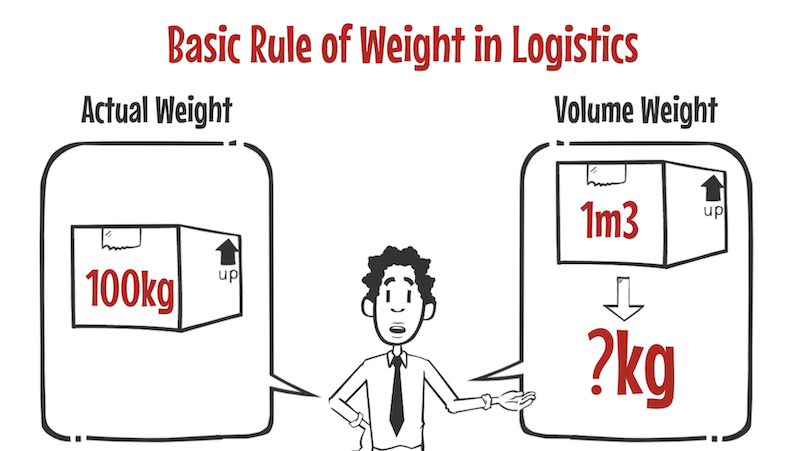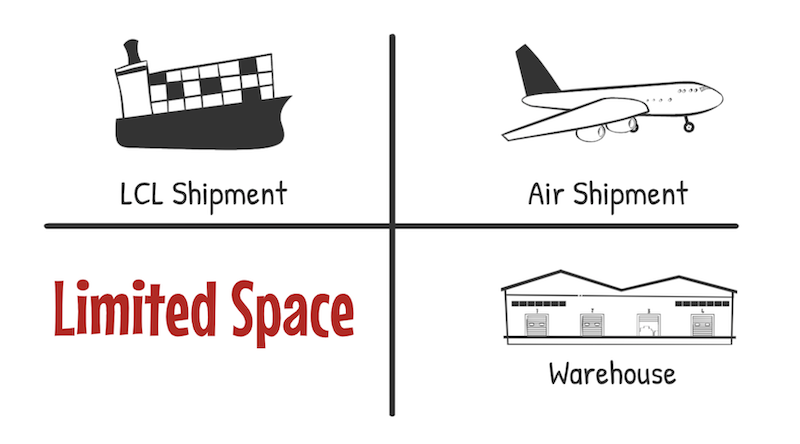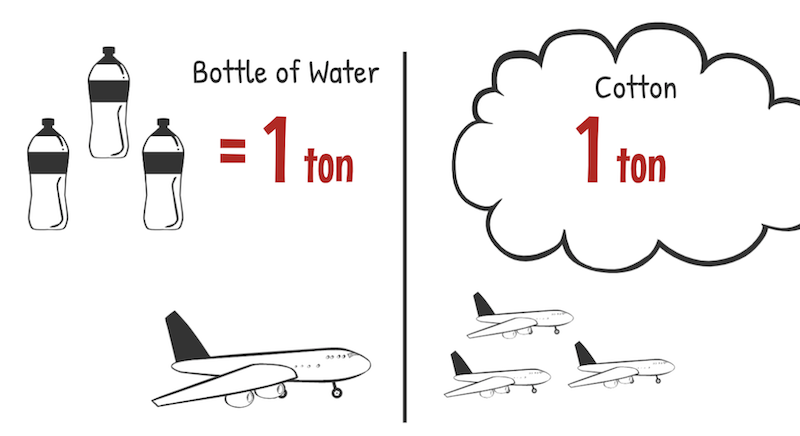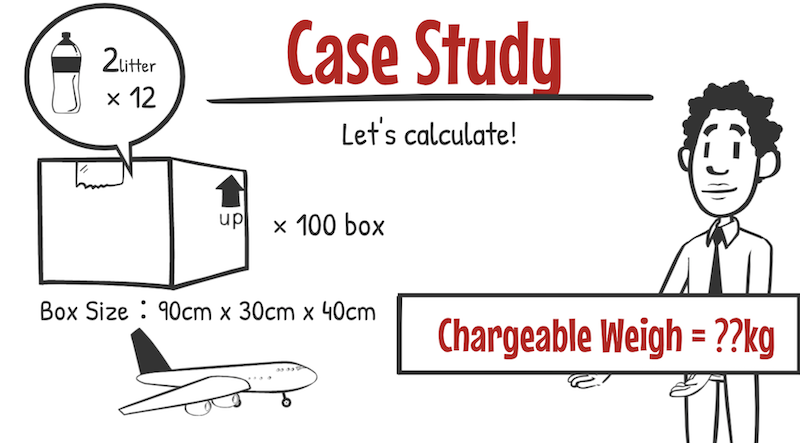
Today, I would like to explain the difference between volume weight and actual weight in logistics.
First, what are actual weight and volume weight? These are the technical terms for basic weight in the logistics industry.
Actual weight is literally actual weight and volume weight is the weight of a cargo, when the size of the cargo is converted into weight.
Actual weight is understandable, but volume weight is difficult to understand, isn’t it?
To understand volume weight, let’s learn about Chargeable Weight which is commonly used in logistics jobs. So I would like to explain it together.
Chargeable Weight

Chargeable Weight is described by comparing the size and weight of a cargo and using the greater one for cost calculation.
The point is to compare the different units, “Large and Heavy” to each other.
Limited Space Business
Logistics uses a limited amount of space to deliver and store the cargos.

The reason is like this. when you do business with limited space, such as Shipping Lines, Airlines, and Warehouse companies, it may not be fair if you use only one unit of size or weight for cost calculation.
Heavy or Bulky – Chargeable Weight Example

Let me give you an example.
If you are transporting “1 ton of bottle of water” and “1 ton of cotton” by air shipment, which one will take up more space?
Water is heavy but not bulky. But cotton is light and very bulky, so it takes up a lot of space.
Air line will have a big loss if they do cost calculation by actual weight for 1 ton of cotton, because transporting the bulky cotton takes up a lot of space in the airplane.
To prevent this, volume weight is used for cost calculation as well.
The Rules of Calculation
Actual weight and volume weight are compared, and the greater one is used as Chargeable Weight.
Let’s actually compare actual weight and volume weight.
LCL shipment and Warehouse Calculation

First of all, for LCL shipment and warehouse. There is a rule to calculate volume weight.
The rule is “1 cubic meter = 1 ton.”
 Senior Seagull
Senior Seagull You have to remember this rule!
【Example】
・Actual Weight: 1.5ton
・Cargo Size: 0.8m(L) × 0.9m(W) × 1.7m(H) = 1.22mCBM => 1.22ton
 Senior Cat
Senior Cat Greater Weight: 1.5ton(Actual Weight) = Chargeable Weight
Air Shipment Calculation

Next, let’s look at how to calculate volume weight in Air transportation. In Air transportation, it is different rule from LCL shipment and Warehousing.
Volume (cm3) is divided by 6,000 = volume weight (kg).
 Senior Cat
Senior Cat It is also important rule!
 Senior Seagull
Senior Seagull Some courier(DHL & Fedex) companies may divide by 5,000 instead of 6,000
Well, let me give you an example.
【Example】
・Actual Weight: 50kg
・Cargo Size: 70cm(L) × 90cm(W) × 90cm(H) = 567,000cubic centimeters
=> 567,000 ÷ 6,000 = 94.5kg
 Senior Cat
Senior Cat Greater Weight: 94.5kg(Volume Weight) = Chargeable Weight
Case study of calculation

Finally, let’s do a case study.
・Cargo: Bottle of Water
・Weight: 2 litter/bottle
・Bottles in Carton box: 12bottle/box
・Quantity: 100box
・Carton Size: 90cm(L) x 30cm(W) x 40cm(H)
・Shipment by Air Plane
 Senior Cat
Senior Cat What would the Chargeable Weight of this shipment be?
 Senior Seagull
Senior Seagull The answer is in the below video. Please try first!
Summery
Today, I explained the difference between volume weight and actual weight. This is basic word in the logistics industry and you have to remember the calculation method as a rule.
It is frequently used in LCL, Warehouse and Air shipment. Please understand the contents of this video and you’ll be able to use it.










